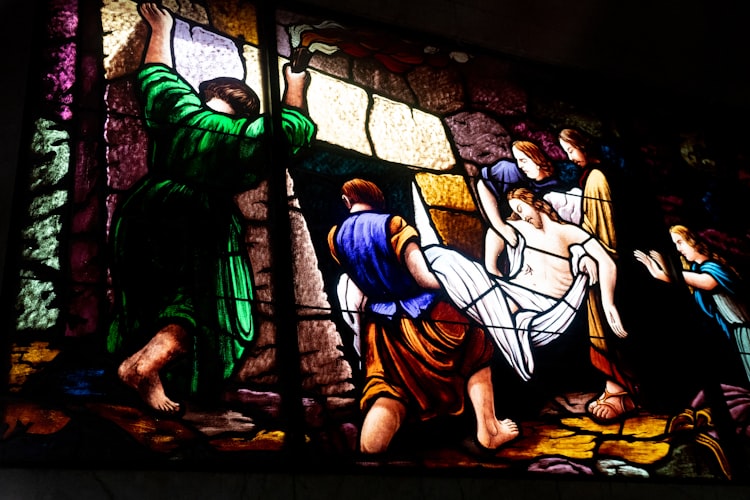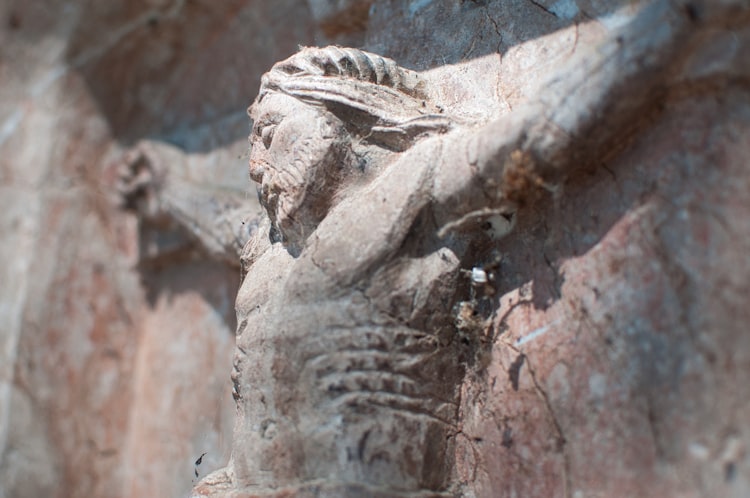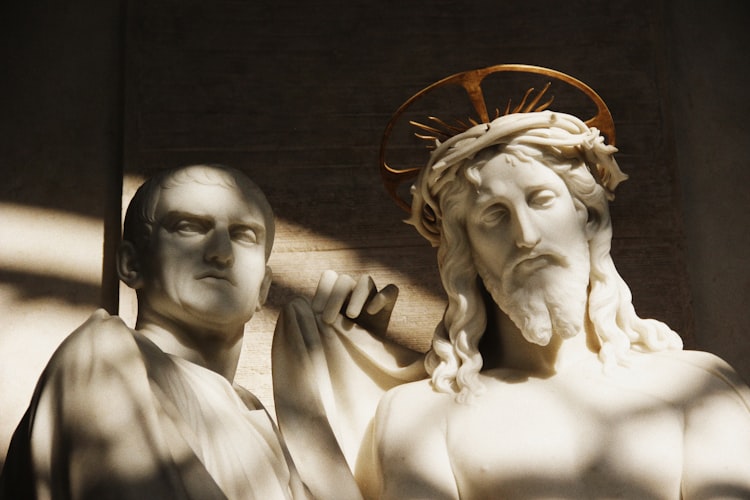Firm Foundation: Part 12

Conceived by the Holy Spirit
“I believe in Jesus Christ, the only begotten Son of God; conceived by the Holy Spirit, born of the Virgin Mary.” This statement is an incredibly important element of Christian faith. There are several aspects of our foundational beliefs contained in this short confession. We covered who Jesus Christ is and what it means that He is the “only begotten Son of God”. But, we can’t stop there without acknowledging the uniqueness of his very being.
In Luke’s Gospel, we read that the angel visits Mary and tells her that “the Holy Spirit will come upon you, and the power of the Most High will overshadow you” (Luke 1:35). An interesting fact we cannot overlook is the connection between Luke’s description and another beginning with which most are most likely familiar: “In the beginning God created the heavens and the earth. Now the earth was formless and empty, darkness was over the surface of the deep, and the Spirit of God was hovering over the waters” (Gen 1:1-2).
Did you catch that? The conception of Jesus was an act of creation much like we read in the very beginning of Genesis. The Spirit of God hovered (or broods) over the formless abyss and brings forth life out of nothing. We read elsewhere in the Hebrew Bible from writers speaking of the “ruach” or “divine breath” or Spirit as the source of creation: “When you send forth your spirit, they are created” (Psalm 104:30).
When God created Adam “mankind” from the ground, we see a picture of the second creation story. Mankind was at first a lifeless clay sculpture until God breathed spirit into the clay and it becomes a living being (Genesis 2:7).
When the Spirit (ruach) hovers or broods over the womb of Mary, we see a picture of God’s creative work once again. The physical man Jesus is the result of the creative breath of God’s Spirit.
Some interesting background is found a short book by Ben Myers: “The Apostle’s Creed: A Guide to the /Ancient Catechism.”
Hippolytus, a Christian pastor from the second century, made an interesting comment suggesting that it was in the Virgin’s womb that the Son of God “refashioned the first-formed Adam in himself.” In other words, the first Adam led the human race astray. But in Jesus, the new Adam was a new beginning for the human family; he was a new ancestor who will lead mankind into life and joy.
Origen of Alexandria in the third century came up with a striking image to illustrate the way Jesus’ humanity was united to the eternal Son of God. He pictured a piece of iron placed in a fire until it is glowing with heat. This iron, he says, “has become wholly fire, since nothing else is discerned in it except fire; and if anyone were to attempt to touch or handle it, he would feel the power not of iron but of fire. In this way, then, that soul (Jesus’ human soul) which, like iron in the fire, was placed in the Word forever, in Wisdom forever, in God forever, is God in all that it does, feels, and understands.”
Jesus is truly human: nothing but iron. He is truly divine: nothing but fire. Jesus is so permeated by the Divine Presence that every part of his humanity is filled with divine energy. He is born of a woman: he is conceived by God’s Spirit. He is human: he is divine. He is iron: he is fire.
It’s complex, to say the least. Thinking about Him this way (iron and fire) is Origen’s attempt at making sense of all that’s said about Jesus in the Gospels. They portray Jesus as someone whose life is drawn directly from the source of God’s own creative energy.
Even in His mother’s womb, He is already bearer of the Holy Spirit. In Luke’s Gospel, the same Spirit that hovered over Mary’s womb is always flashing out and touching the lives of those who come into contact with Jesus. When Mary greets her cousin Elizabeth, the baby in Elizabeth’s womb leaps for joy and Elizabeth is filled with the Holy Spirit (Luke 1:41).
In the sixth century, the Syrian preacher Jacob of Serug described the scene like this:
“The Son of God sent forth the Spirit … and the boy was baptized by the Holy Spirit while he was still in his mother’s womb. At once the confined babe began preaching to prepare the way for the King who came from the house of David. A new message was heard from within the womb, a babe who leaps and exults and hurries to prepare the way.”
It is the same Spirit who flashes out when the woman with the flow of blood touches the hem of Jesus’ garment and is instantly healed (Matt 9:20-22). It is the same Spirit who, when Jesus lies dead in the tomb, breathes life into his body so that death is dissolved and the grave is emptied (Rom 8:11).
And, it is the same Spirit that flashes out on the day of Pentecost so that tongues of fire descend on Jesus’ friends and they are transformed from a lifeless rabble of frightened followers into fearless witnesses of the resurrection (Acts 2:1-4). The same Spirit who rested on Jesus in His mother’s womb now rests on the whole company of Jesus’ followers.
Jesus is the bearer of the Spirit and the sender of the Spirit. In him, the Spirit creates a new beginning for the whole human race. That is what the church proclaims in the concise but astonishing words: “conceived by the Holy Spirit.”
________
“The Apostle’s Creed: A Guide to the /Ancient Catechism”. Copyright 2018 Ben Myers; Lexham Press






Member discussion